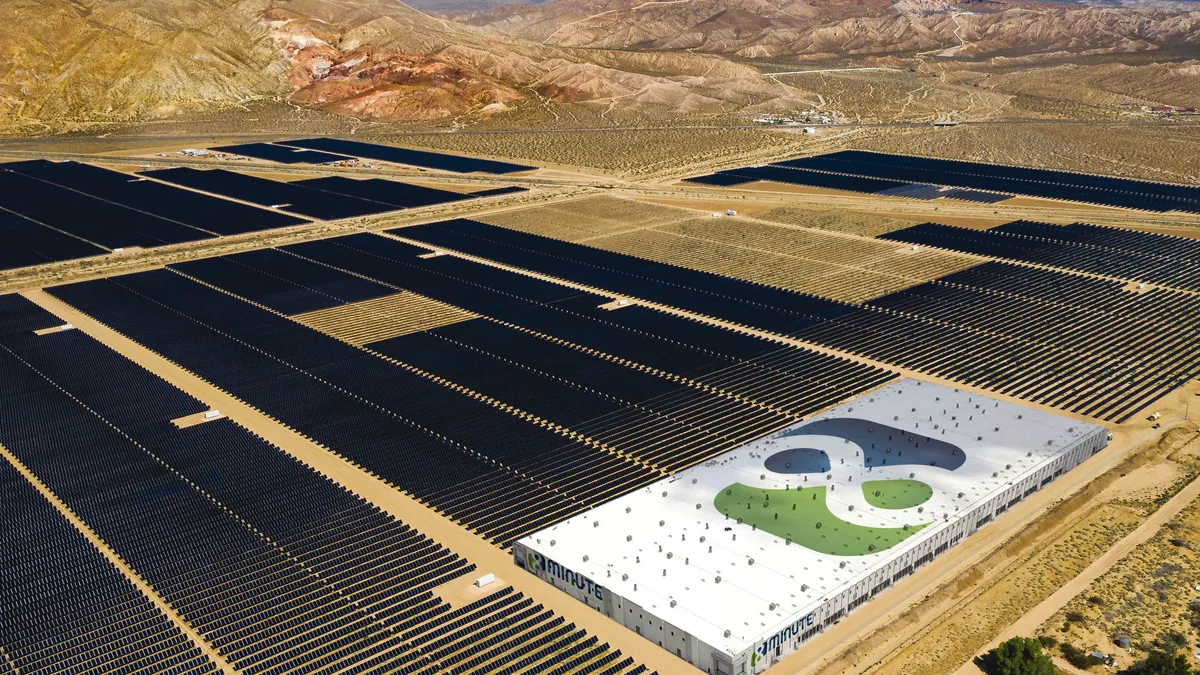Dive Brief:
- As utilities rapidly expand their renewable energy offerings, hybrid solar and storage solutions are a key technology for maintaining grid reliability, speakers said at an annual Energy Storage Association Conference last week. "Hybrids are the future," said Mike Bowman, chief technology officer for GE's renewable hybrids arm, adding that they're a "natural progression" for the grid.
- The hybrid systems, which co-locate generators and batteries on the same site, have the advantage of reducing transmission and sharing on installation costs and permitting. They can also offer greater dispatch flexibility for grid operators.
- However, hybrid systems are hampered by the constantly-evolving technology, the high up-front cost of the systems and uncertainty about integration into the larger grid. "Interconnection rules and tying interconnection to optimize hybrid … is something the industry is struggling with right now," said Evan Bierman, director of energy storage product management and renewable integration for EDF Renewables.
Dive Insight:
According to a summer 2020 report from the U.S. Energy Information Administration, deployment of battery energy storage systems grew from 59 MW of power capacity in 2010 to 869 MW by the end of 2018. An estimated 4.6 GW of wind, gas, oil and photovoltaic plants were co-located with batteries as of April 2020, with another 14.7 GW in the immediate development pipeline, according to data from the Energy Information Administration and grid operators, highlighted in Greentech Media.
Energy providers are increasingly interested in hybrid systems, including some that do not use lithium-ion batteries but instead rely on pumped hydropower or hydrogen, as a way to more efficiently add renewables and the storage necessary to ensure reliability.
Speaking on a panel Wednesday at the virtual 2021 U.S. Energy Storage Association Annual Conference & Expo, Bierman said hybrids are especially appealing in different areas of the country that are still rolling out renewable energy.
"In the desert Southwest, you almost always have some hybrid going in, especially as the price point comes down to where it is attractive," Bierman said. "There are some places in the country that have both solar and wind and both from a time of day and a seasonal perspective, they match really well. But elsewhere, hybrids can fill in those gaps."
Hybrid systems had been hampered by the high cost of batteries, even with a federal tax credit that offered an incentive for co-locating batteries with solar. Now that the cost is becoming more appealing, industry officials said their biggest challenge is education and optimization. Because hybrids represent a relatively new player on the grid, interconnection rules may not smoothly accommodate new installations.
There are also challenges in finding the right technology to fit each client or location. Hybridization can restrict grid charging by limiting some supply, and research from Lawrence Berkeley National Laboratory estimates that those conditions could create as much as an 11% loss in wholesale market value.
Bowman said his company is working on software that can look at variability in supply and optimize hybrid systems for each market. Maximizing all the variables, including the capital cost, of the systems, Bowman said, can make hybrid systems "start to look more like a fossil resource" in their reliability and potential for the grid. That, he said, has made his job easier even as he ramps up his education efforts.
"There's a wealth of interest in this information," Bowman said, adding that there has been interest from developers and energy providers alike. The problem, he said, is that "turns into a significant load on the industry."














